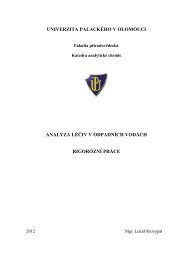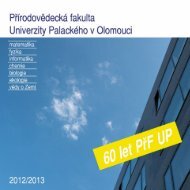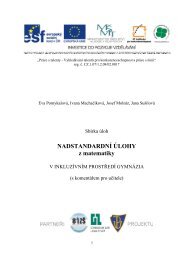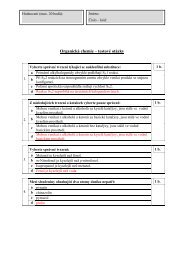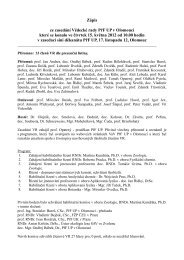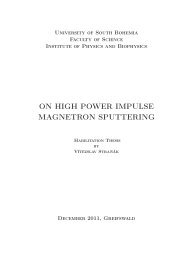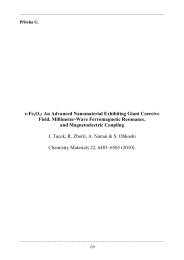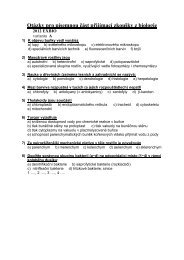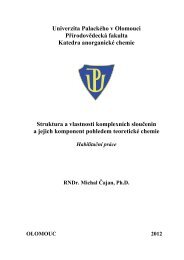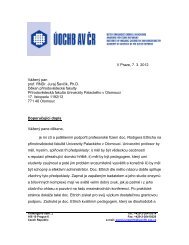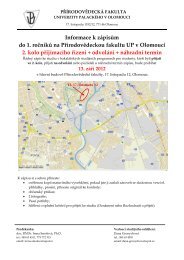A comparative structural analysis of direct and indirect shoot ...
A comparative structural analysis of direct and indirect shoot ...
A comparative structural analysis of direct and indirect shoot ...
You also want an ePaper? Increase the reach of your titles
YUMPU automatically turns print PDFs into web optimized ePapers that Google loves.
Aluminium sensitivity <strong>of</strong> root cells related to aluminium internalization 4207<br />
Fig. 6. Time-course <strong>of</strong> aluminium uptake in the cells <strong>of</strong> the meristem <strong>and</strong> DTZ monitored by morin. Pulse treatment <strong>of</strong> Arabidopsis roots with 50 lM<br />
AlCl 3 for 30 min, followed by washing <strong>and</strong> morin staining. Observation <strong>of</strong> the root cells 20 min after the end <strong>of</strong> aluminium treatment revealed the<br />
presence <strong>of</strong> aluminium only in the apoplast (A). The first signals <strong>of</strong> morin fluorescence in the cytoplasm were detected within 1 h (B). 2 h <strong>and</strong> 30 min after<br />
treatment aluminium accumulated into roundish vacuole-like structures <strong>of</strong> varying size (C). 3 h 30 min after treatment aluminium was sequestered in<br />
vacuole-like compartments (D). Representative <strong>of</strong> five seedlings per treatment. Bar¼10 lm.<br />
treatment (Fig. 9B). After application <strong>of</strong> the NO scavenger<br />
cPTIO, the DAF-2DA fluorescence signal was lacking, indicating<br />
effective NO scavenging (Fig. 9C). In control root<br />
apices, there were three local centres <strong>of</strong> NO production:<br />
one at the root cap statocytes, another one at the quiescent<br />
centre <strong>and</strong> distal portion <strong>of</strong> the meristem, <strong>and</strong> the third, the<br />
most prominent one, at the distal part <strong>of</strong> the transition zone<br />
(the blue line in Fig. 9D). While the NO-scavenger stopped<br />
NO production in roots (the green line in Fig. 9D), aluminium<br />
treatment (90 lM for 1 h) completely abolished only the NO<br />
production peak in the distal part <strong>of</strong> the transition zone; the<br />
first two peaks became even more pronounced (the red line<br />
in Fig. 9D).<br />
Discussion<br />
Although aluminium toxicity in plants has been extensively<br />
studied from different points <strong>of</strong> view, a complete image<br />
<strong>of</strong> its distribution at the cellular level is still missing. In line<br />
with the supporting data for aluminium uptake into the<br />
cells, evidence for predominant accumulation <strong>of</strong> aluminium<br />
only in the apoplast has also been given. However, it must be<br />
kept in mind that much <strong>of</strong> the data available in this field were<br />
obtained with different plant species <strong>and</strong> under experimental<br />
conditions which were not comparable. Experimental<br />
approaches such as the detection <strong>of</strong> aluminium in living cells<br />
with high sensitivity in physiological conditions may contribute<br />
to clarifying this situation.<br />
Internalization <strong>and</strong> distribution <strong>of</strong> aluminium can be<br />
visualized at low concentrations in living cells<br />
The time-course <strong>of</strong> internalization <strong>of</strong> aluminium in actively<br />
growing root cells <strong>of</strong> Arabidopsis thaliana was detected by<br />
the application <strong>of</strong> non-invasive microscopy techniques.<br />
Both dyes morin <strong>and</strong> FM4-64 were used as vital markers<br />
in living cells under microscopic control. While FM4-64<br />
is widely used as a vital marker <strong>of</strong> endocytosis in different<br />
cell types (Vida <strong>and</strong> Emr, 1995; Betz et al., 1996; Fischer-<br />
Parton et al., 2000; Bolte et al., 2004; Ovečka et al., 2005;<br />
Šamaj et al., 2005; Dettmer et al., 2006; Dhonukshe et al.,<br />
2006), morin was mainly used as a last staining step in the<br />
final stage <strong>of</strong> the experiments. In this study, morin was<br />
used as a marker <strong>of</strong> aluminium redistribution in living Arabidopsis<br />
root cells. Morin labelling in the early stages <strong>of</strong>




